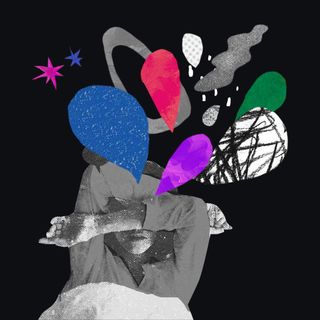First, a history lesson: Neanderthals are an extinct subspecies of archaic humans who evolved in Europe and parts of Asia and went extinct about 40,000 years ago. They’re different from Homo sapiens — us, essentially, and relatively new in the evolutionary timeline. Homo Sapiens used to be one of several human and human-like ape species collectively known as hominins, which includes Ardipithecus, Homo erectus, and more. However, evidence shows that Homo sapiens and some of these other species, including Neanderthals, interbred — which perhaps explains why some people today still contain traces of Neanderthal genes.
What’s more — the results of this ancient interbreeding could play a role in how different people process modern medicine today. A new study, published in the Pharmacogenics Journal, noted how common but essential medicines like blood-thinners, ibuprofen, and statins (used to lower cholesterol) aren’t all broken down in quite the same way. The enzymes in our bodies responsible for doing so go back millennia. “This is one case where the admixture with Neanderthals has a direct impact in the clinic. Otherwise therapeutic doses can be toxic for carriers of the Neanderthal gene variant,” said evolutionary geneticist Hugo Zeberg, who led the study.
The finding tracks with recent research that’s shown how we may all have more Neanderthal DNA than we might have previously believed. This DNA influences everything from our sleep patterns, our tendency for nicotine addiction, hair color, and even skin color. So far, these were fairly benign considerations as far as our health goes — but the new study sheds light on how it could be important to learn more about just how much we’ve inherited from these early humans.
The biological differences that individuals with Neanderthal DNA experience has to do with a family of enzymes in the liver called the cytochrome P450 which help metabolize many of the drugs we take. It is the result of coding by a gene called CYP2C9 that can code the cytochrome in 20 different ways: with CYP2C9*2 being a type that is 70% less effective in breaking down drugs than CYP2C9*1. What type we inherit plays a role in how long we can retain drugs in our system and effectively break them down.
Related on The Swaddle:
A 51,000‑Year‑Old Bone Carving Shows Neanderthals May Have Had ‘Artistic’ Skills
There’s another type called CYP2C8*3, which has been shown to be paired with CYP2C9*2 — an occurrence that tipped researchers off to the fact that they may have Neanderthal origins. They’re present together in what is known as a haplotype — a “grouping of genomic variants that tend to be inherited together.” In this haplotype, the two gene variants are separated by a long chain of DNA “bases” — something which has been seen in Neanderthals.
“Prior to what is now estimated to be several admixture events between Neandertals and modern humans, these two groups evolved largely independently of each other for ~500,000 years… During this time, both groups accumulated genetic variants that differed from the ancestral states seen in other primates,” the researchers explained in their paper. Differing environmental conditions may have led both species to evolve with different genetic variations.
“Recently, the major genetic risk factor for a severe outcome of Covid19 infection as well as a protective variant [has] been shown to be of Neandertal origin… Although this knowledge itself does not change clinical practice, it explains differences observed across ancestries seen in clinical practice,” the paper went on to explain.
We’re the only surviving species of the group of hominins that roamed the Earth tens of thousands of years ago. The others died out due to various reasons — including climate change — but new studies show how they nevertheless continue to live within our own bodies. It could explain many variations we see among ourselves and more importantly, knowing we’re not so different from our early ancestors, could potentially unpack anthropocentric notions of intelligence, superiority, and how we occupy this planet.




